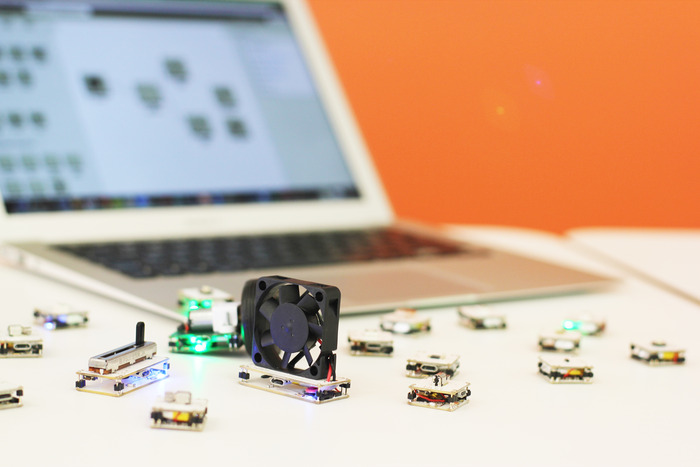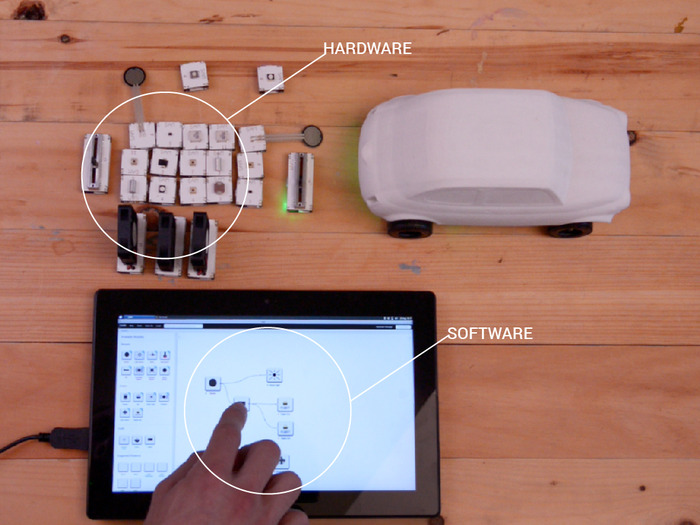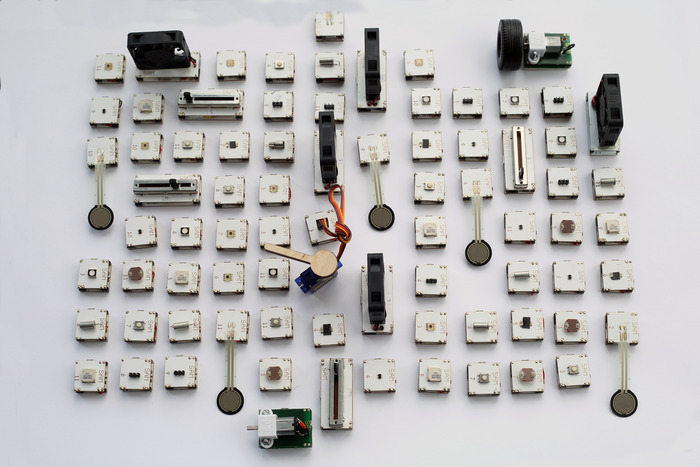SAM is an exciting new electronics development kit launched on Kickstarter that promises to teach inventors, artists, and students everything they need to know about hardware, software, and the Internet.

The group behind the technology, SAM Labs, is a London-based unit well on its way to surpassing its goal of $50K pounds. The kit has been featured on a litany of websites, and for good reason: it presents a fairly easy to understand approach to learning about engineering, electronics, coding, and the increasingly important Internet of Things.

While every SAM module has a specific function (and there are a LOT of them), they can all be categorized under one of two groups: sensors and actors. The former detects and measures the world around it, while the latter moves and shapes it.
All modules communicate with one another via Bluetooth Low Energy. The range extends up to 15 meters on their own, or around the world via the SAM cloud module.
In terms of physical specs, the majority of the SAM Modules Boards are 21 x 21 x 9 mm. Depending on the sensor or actor in use for a project, a few millimeters can be added to the height.
Everything is recharged with a micro USB cable.

The SAM app built for the kit is based on physical computing with some drag-and-drop flow-based programming. It’s the most simplistic way to teach deployment methods using custom Bluetooth networks, including customized relations between the modules.
As for latency, communication between the App and SAM modules is 19 ms (meaning the user will likely never notice any lag in communication).

What’s most exciting about SAM is its approach to engineering. Where other electronics dev kits require hardware skills like wiring and soldering, software ability like coding and debugging, and other varied levels of know-how, SAM ensures easy to set-up communication between hardware and software, which makes getting into the world of technology fun and interesting, as opposed to frustrating and intimidating.
As projects are completed using SAM, the program displays code on the computer screen for the user to learn from. And as the kit is used to complete more projects, the user understands deeper levels of code, especially as devices become more intricate by daisy-chaining or adding parts from outside the kit.
And once the user reaches a level of comfortability with the kit, he / she can modify the kit’s code, or otherwise write code themselves.
To learn more, check out the video below:
As mentioned earlier, the goal will likely be passed in the days after this article is published, but you can still contribute — there are multiple pledge levels depending on how many components you want. The software tied to SAM is free, with copy on the Kickstarter page suggesting that it will likely be made open source down the road.
To contribute to the group’s funding campaign, check out the SAM Kickstarter page.
Advertisement
Learn more about Electronic Products Magazine





